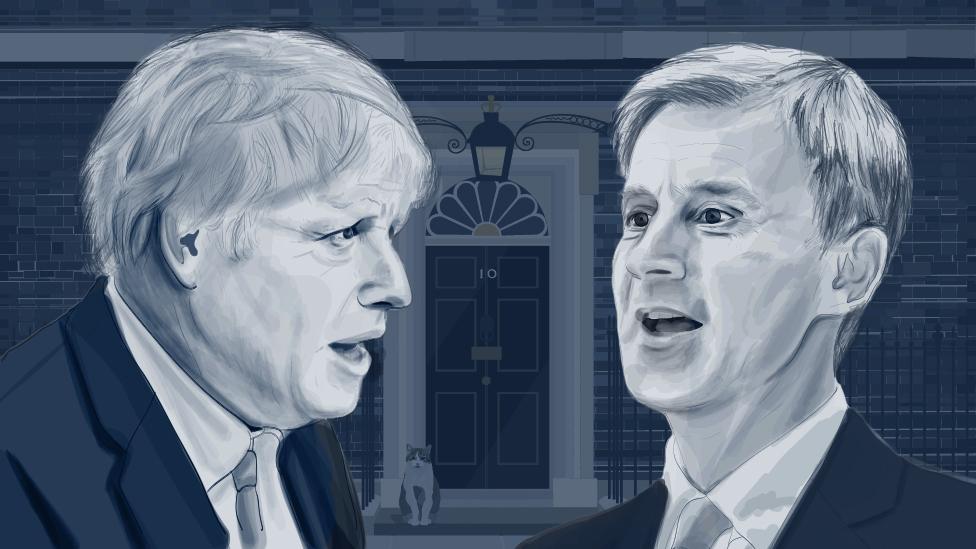Tory leadership: How are Tory hopefuls campaigning online?
- Published
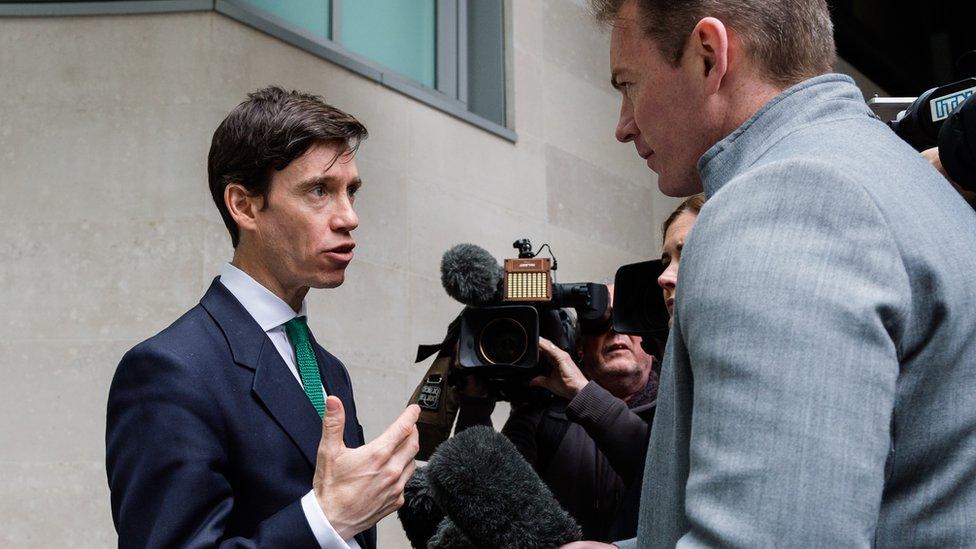
Rory Stewart's social media videos have been widely shared in the last week
The last contested Conservative leadership race took place in 2005. Back then Facebook was only one-year-old and Twitter did not exist.
Yet, in the last seven days several of the Tories vying to become the next prime minister have released videos on social media.
Their contrasting styles show how the internet is changing how politicians communicate, and how quickly this field is changing.
'Sound turned off'
Party political broadcasts have been around for decades.
The first took place back in 1924 on BBC radio but techniques have changed a lot since then - and further still in the last few years.
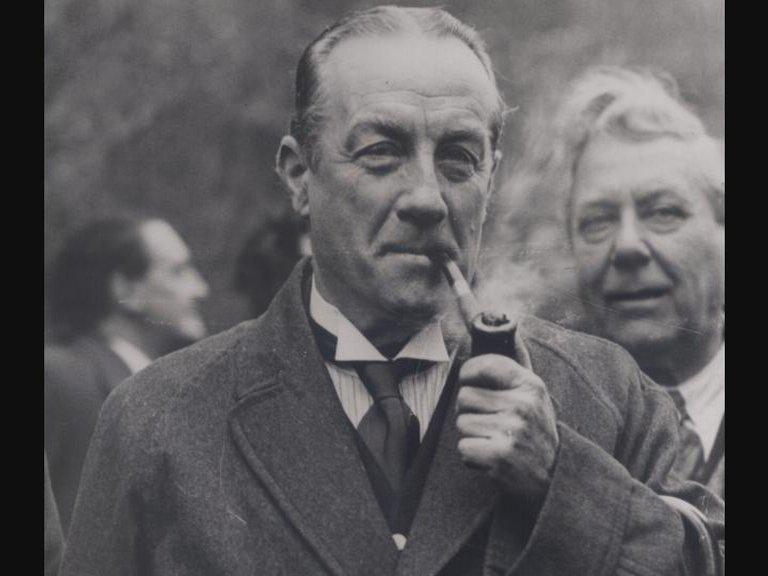
Radio broadcasts began in 1924 when Stanley Baldwin was elected Conservative Prime Minister
Craig Dillon is the founder of communications agency Westminster Digital which has in the past made videos for several of the Tory leadership candidates.
Video captions are essential on social media videos, he says, because 85% of people watch the videos with the sound turned off.
On TV or radio there is a chance to build context before setting out a message, but attention spans are shorter online.
"The first 10 seconds are really key", says Dillon. "You have to use tactics to catch people's eye."
One candidate, former Brexit Secretary Dominic Raab, caught people's eye this week with a quirky head turn at the start of his launch video.
Allow X content?
This article contains content provided by X. We ask for your permission before anything is loaded, as they may be using cookies and other technologies. You may want to read X’s cookie policy, external and privacy policy, external before accepting. To view this content choose ‘accept and continue’.
Environment Secretary Michael Gove's launch video is similar to Raab's some respects - it features a smartly-dressed piece-to-camera, and fast-paced stock footage.
It also has a clip of Gove criticising Labour leader Jeremy Corbyn in the Commons earlier this year - with good reason.
The Conservative's YouTube channel has not had many smash hits recently, but the full video of that Gove speech has racked up more than 700,000 views since January.
Allow YouTube content?
This article contains content provided by Google YouTube. We ask for your permission before anything is loaded, as they may be using cookies and other technologies. You may want to read Google’s cookie policy, external and privacy policy, external before accepting. To view this content choose ‘accept and continue’.
Home Secretary Sajid Javid set out his pitch this week in a wood-panelled office - all fairly conventional.
But 10 seconds in, there is a subtle nod to a new media age - a wobbly shot from a side angle.
This seems peculiar from a conventional broadcast perspective.
But this technique has become mainstream in recent weeks after the Brexit Party used this style extensively in European election campaign videos.
Allow X content?
This article contains content provided by X. We ask for your permission before anything is loaded, as they may be using cookies and other technologies. You may want to read X’s cookie policy, external and privacy policy, external before accepting. To view this content choose ‘accept and continue’.
"We are using very quick, unsteady shots," Brexit Party digital chief Steven Edginton told the BBC.
"We're looking for a new fresh style," he said. "The reason we do that is to show a contrast with the other parties."
Labour have been posting slick online videos for years.
In 2017 the party spent far less than the Conservatives on social media but their content was shared far more widely.
Parties constantly borrow from each other to try to catch up in the race to go viral.
Edington admits a Brexit Party video criticising Jeremy Corbyn's party was deliberately shot in a style similar to Labour's own videos.
"Labour does some fantastic emotional videos... some of their videos are very powerful," Edington says. "We used Labour's own style to show that - their very slow emotional music."
Allow X content?
This article contains content provided by X. We ask for your permission before anything is loaded, as they may be using cookies and other technologies. You may want to read X’s cookie policy, external and privacy policy, external before accepting. To view this content choose ‘accept and continue’.
As well as borrowing from other parties, UK campaigners are also taking inspiration from the US.
Craig Dillon of Westminster Digital says MPs "constantly talk about" the videos of Alexandra Ocasia-Cortez.
The left-wing Congresswomen's videos have had huge numbers of views over the past year.
Alexandria Ocasio-Cortez celebrates her win with supporters
Although no Tories have matched her production levels yet, most videos look fairly slick.
But there is one exception - International Development Secretary Rory Stewart.
A brief selfie video of Stewart offering to speak to members of the public in Kew Gardens has had 1.5m views on Twitter even though it has no captions.
When a BuzzFeed journalist cheekily asked Stewart "are you pretending to hold your phone" the minister replied "yes".
The shot is very stable, suggesting it was filmed on a tripod - but Stewart's admission is disarming and helps feed an image of authenticity.
Allow X content?
This article contains content provided by X. We ask for your permission before anything is loaded, as they may be using cookies and other technologies. You may want to read X’s cookie policy, external and privacy policy, external before accepting. To view this content choose ‘accept and continue’.
Facebook is by far the most popular social media site in the UK. Twitter is more niche, but it is popular with journalists and politicians.
However some of these campaign videos - Stewart's in particular - have accrued a lot of views on the site.
Allow X content?
This article contains content provided by X. We ask for your permission before anything is loaded, as they may be using cookies and other technologies. You may want to read X’s cookie policy, external and privacy policy, external before accepting. To view this content choose ‘accept and continue’.
That's because not everyone necessarily comes to a Twitter video by logging in and scrolling through their feed - some will have followed a link.
Posting links in WhatsApp groups is an integral part of this campaign, says Craig Dillon.
"A lot of traffic now is driven in a different way," he says. "A lot of [newspaper] articles people are doing are behind paywalls now."
Another way in which political messages are disseminated online is via "influencers" - outsiders who already have a big following.
Allow X content?
This article contains content provided by X. We ask for your permission before anything is loaded, as they may be using cookies and other technologies. You may want to read X’s cookie policy, external and privacy policy, external before accepting. To view this content choose ‘accept and continue’.
BBC Sport presenter Gary Lineker is a strident opponent of Brexit on social media and generally unsympathetic to the Conservatives.
But this week he approvingly shared with his 7.3m followers an interview in which Rory Stewart criticised the idea of a no-deal Brexit.
Stewart's interview with JOE, a website aimed at young men, now has 1.8m Twitter views - in large part surely due to Lineker's clout.
However only a tiny fraction of the people watching these videos will get a say in replacing Theresa May.
Under the party's rules, Conservative MPs narrow the field down to two candidates, then party members decide.

Who will replace Theresa May?
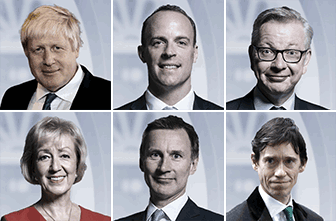
The winner of the contest to lead the Conservative Party will become the next prime minister.

Last time the Conservative Party released membership figures there were just 124,000 of these - and two-thirds of them want a no-deal Brexit, according to a recent YouGov poll.
That suggests Rory Stewart's campaign might do well online, but not be the right message to win his party's leadership.
Many Tory members will be awaiting the next move of a candidate who has managed to dominate the online conversation despite laying low on social media this week.
According to analysis by BuzzFeed News, external, nine of the 10 most shared recent leadership articles are about Boris Johnson.
- Published1 June 2019
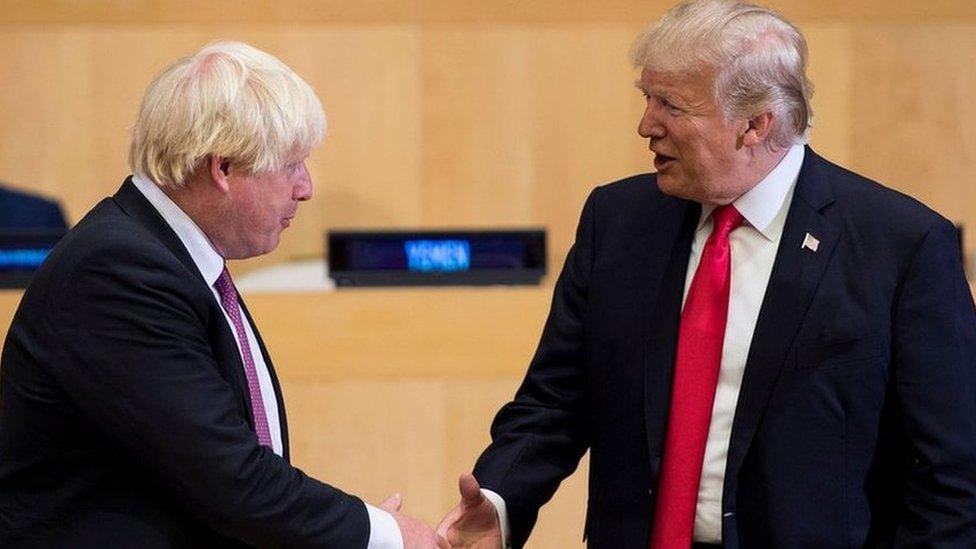
- Published24 May 2019
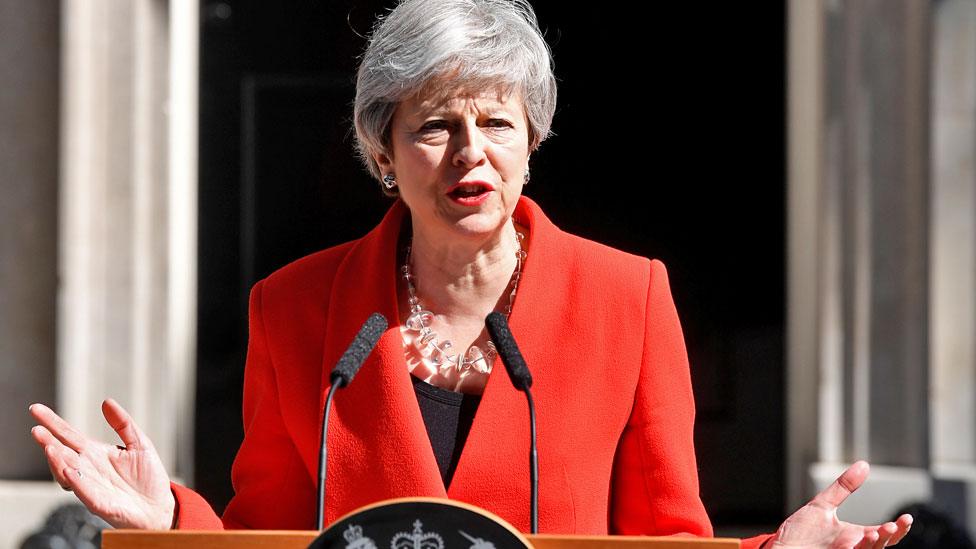
- Published18 July 2019
